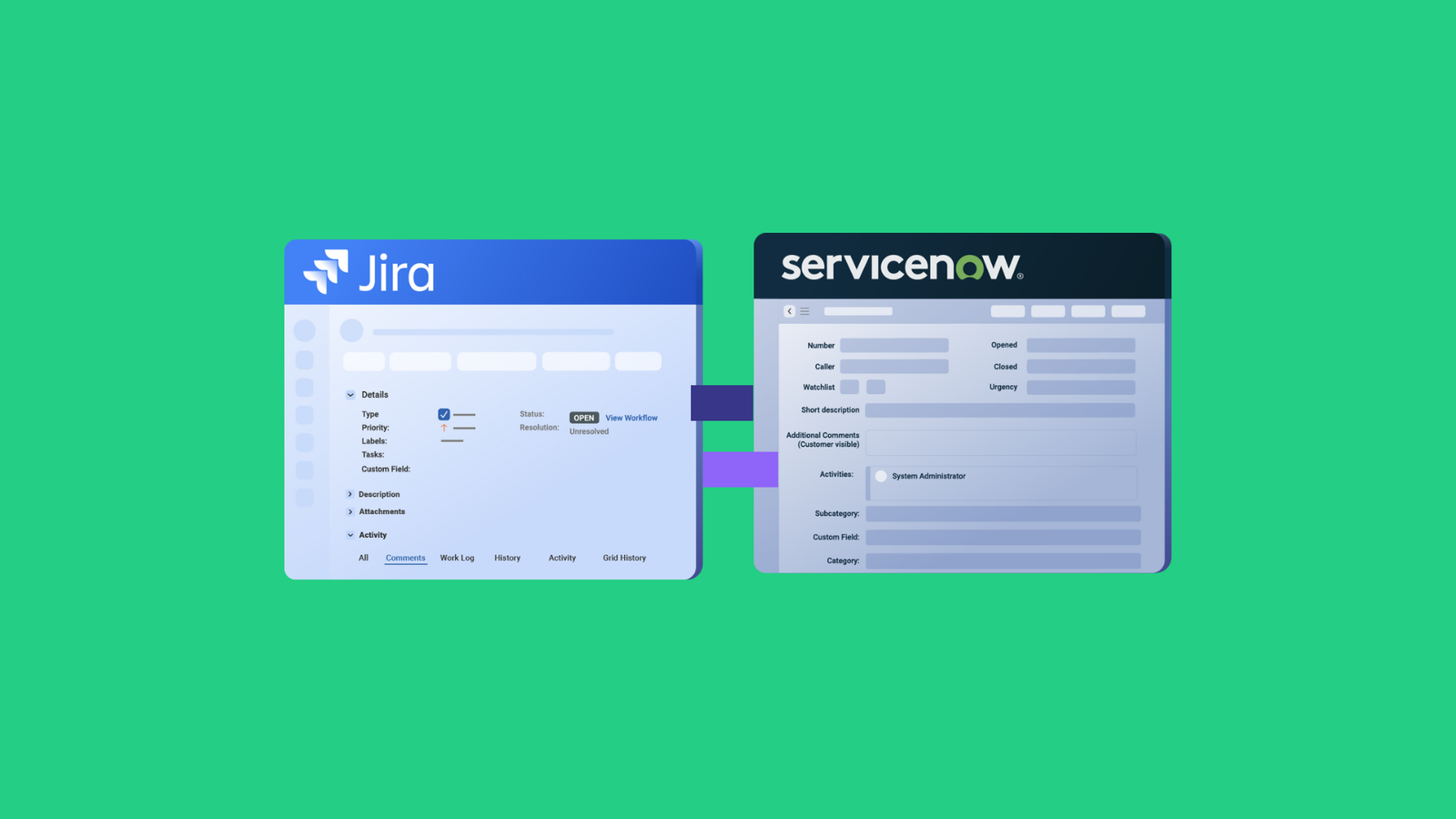In an MSP environment, service providers must respond quickly to critical issues.
But here’s the irony: the very tools designed to help service providers deliver exceptional services can sometimes be the reason their services aren’t up to par.
For many MSPs and MSSPs, one of the biggest challenges is managing multiple client environments, each with different service desk portals, workflows, and practices.
This leads to missed tickets, duplicated information, miscommunication, and hours wasted on manual updates.
In an industry where minutes matter, this can be risky.
So, what’s the solution?
Leading MSPs fix this with smart integrations. By connecting their platform with their customers’ platform, both parties work in their native environments, while updates sync automatically. No jumping between portals or getting forced to use unfamiliar systems.
This improves response times, reduces errors, and allows teams to focus on solving real problems, not chasing down information.
Imagine a client reporting a threat in the Jira Service Management (JSM) portal that needs to be logged in the MSP’s ServiceNow. With integration, the ticket triggers an automatic, high-priority incident in ServiceNow, starting the MSP’s response workflow, without delays or errors.
With time, this setup starts to grow consistently within the MSP ecosystem. What begins as a point-to-point integration evolves into a network of connected systems spanning organizations and geographies. Plus, MSPs can customize the integration for each client separately while maintaining control over their environment.
As clients experience the benefits, they request more integrations, turning MSP services into a scalable hub.
This is how the network effect kicks in, where each new client integration becomes easier to replicate. As more clients connect, the network’s value increases, creating a classic network effect in motion.
And here’s where things get interesting: some MSPs no longer treat integrations as just a means to improve their services, but package them into their service offerings, opening new revenue streams.
Also, positioning integrations as a service differentiates them from competitors and adds value to their portfolio.
But before diving in, a few essentials:
- Assess if your current systems are integration-ready
- Choose integration tools that allow client-specific customization
- Make security and compliance non-negotiables
Integration tools like Exalate connect multiple systems and can tailor integrations to client needs. With script-based, AI-powered setups, MSPs can ensure real-time sync across platforms like Jira, ServiceNow, and more.
Learn how QuorumCyber improved its average incident response and resolution time using Exalate.
| In fact, some of their clients saw a 60% rise in service desk integration demand from both existing and new customers. |
Yes, there are challenges associated with this setup, including security, compliance, and contractual obligations. But, for high-growth MSP environments, the payoff is significant.
So the real question isn’t whether integration is worth it. It’s: what’s the cost of not doing it?
In the MSP industry, where rapid response defines success, the ability to connect, automate, and scale systems becomes a must-have.
It’s time to rethink whether your existing tools are helping you respond faster or are quietly slowing you down.
Recommended Reads



